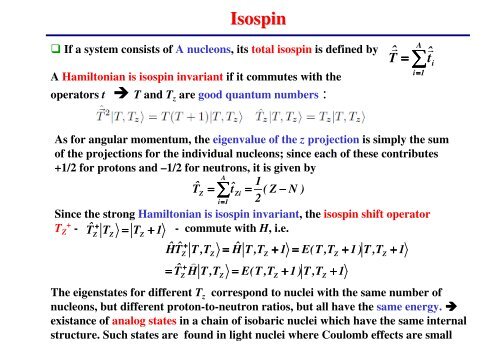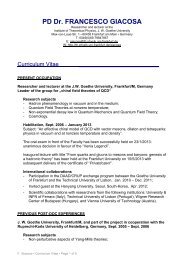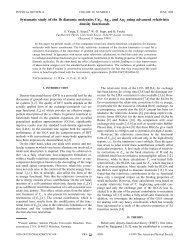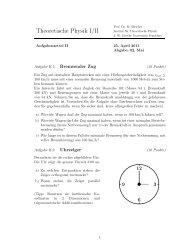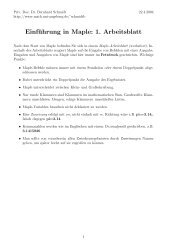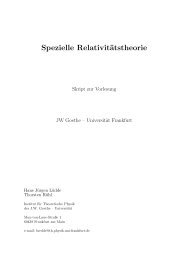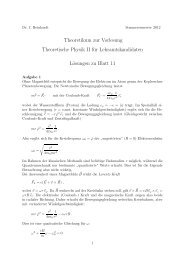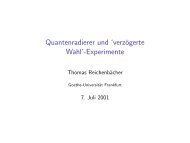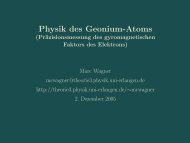Coupling of Angular Momenta Isospin Nucleon-Nucleon Interaction
Coupling of Angular Momenta Isospin Nucleon-Nucleon Interaction
Coupling of Angular Momenta Isospin Nucleon-Nucleon Interaction
You also want an ePaper? Increase the reach of your titles
YUMPU automatically turns print PDFs into web optimized ePapers that Google loves.
<strong>Isospin</strong><br />
If a system consists <strong>of</strong> A nucleons, its total isospin is defined by<br />
A Hamiltonian is isospin invariant if it commutes with the<br />
operators t T and T z are good quantum numbers :<br />
r<br />
Tˆ<br />
=<br />
A<br />
∑<br />
i=<br />
1<br />
r<br />
tˆi<br />
As for angular momentum, the eigenvalue <strong>of</strong> the z projection is simply the sum<br />
<strong>of</strong> the projections for the individual nucleons; since each <strong>of</strong> these contributes<br />
+1/2 for protons and –1/2 for neutrons, it is given by<br />
A<br />
1<br />
Tˆ<br />
Z<br />
= ∑tˆ<br />
Zi<br />
= ( Z − N )<br />
i=<br />
1 2<br />
Since the strong Hamiltonian is isospin invariant, the isospin shift operator<br />
T + + Z - Tˆ<br />
- commute with H, i.e.<br />
Z<br />
TZ<br />
= TZ<br />
+ 1<br />
+<br />
ĤTˆ<br />
Z<br />
T ,TZ<br />
= Ĥ T ,TZ<br />
+ 1 = E(T ,TZ<br />
+ 1) T ,TZ<br />
+ 1<br />
)<br />
+<br />
= Tˆ H T ,T = E(T ,T + 1) T ,T + 1<br />
Z<br />
Z<br />
The eigenstates for different T z correspond to nuclei with the same number <strong>of</strong><br />
nucleons, but different proton-to-neutron ratios, but all have the same energy. <br />
existance <strong>of</strong> analog states in a chain <strong>of</strong> isobaric nuclei which have the same internal<br />
structure. Such states are found in light nuclei where Coulomb effects are small<br />
Z<br />
Z


